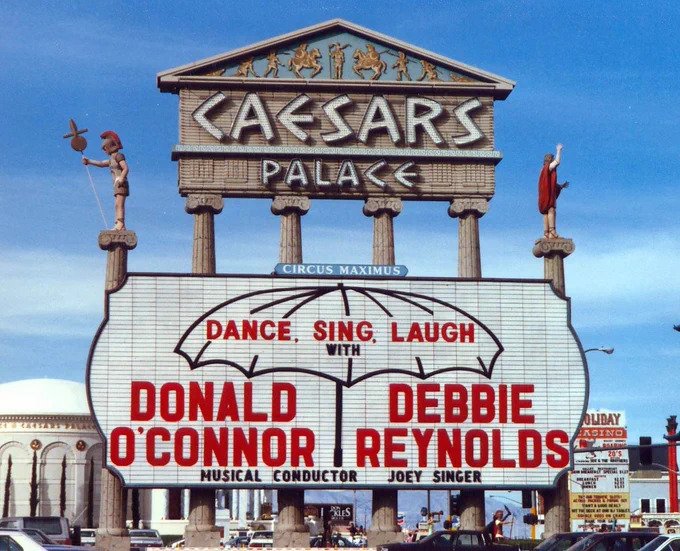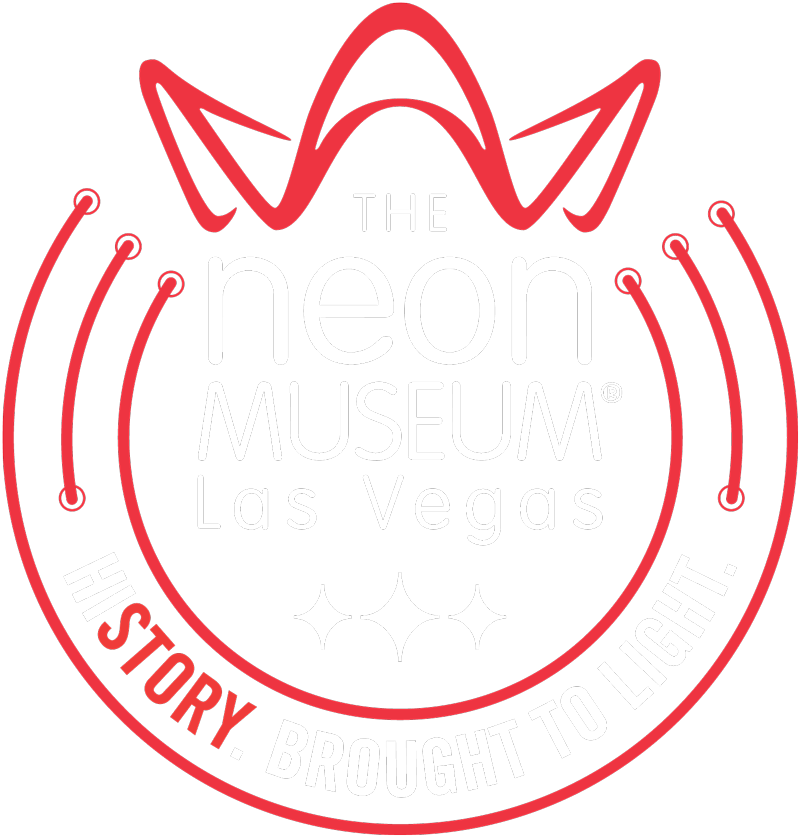Caesars Palace opened on August 5, 1966, developed by hotelier and casino owner Jay Sarno. This iconic resort was one of the first Las Vegas properties to incorporate a fully developed theme, much ahead of its time. Its Greco-Roman design was present on every corner, from its opulent fountains to its ornate Corinthian columns.
 The original 1966 sign was designed by Young Electric Sign Company (YESCO), but California-based Ad-Art was willing to work without a down payment and created the marquee, using much of the first design.
The original 1966 sign was designed by Young Electric Sign Company (YESCO), but California-based Ad-Art was willing to work without a down payment and created the marquee, using much of the first design.
This portion of the sign was part of the original super-pylon design that was in front of the resort, a great example of refurbished signage. This top section of the Caesars sign originally featured Roman Centurion figures on a blue background, which were replaced in the 1980s with the profile of Caesar and a faux marble design.
The Greco-Roman theme has remained a constant through all their renovations, and the Corinthian columns on the side of the hotel are currently the tallest ones in the world. Caesars was a game changer in sign design for Las Vegas. Caesars was the first casino resort set far off the street, further demanding that the sign function as architecture to convey the theme of the place to passersby.
 Since its opening, in Caesars Palace alone, there has been numerous iconic events at the resort, such as Julio Cesar Chavez vs. Oscar de la Hoya, the hotly anticipated fight – attended by almost 16,000 people; the Hangover (2009) simultaneously redefined one of the quintessential properties on the Strip: Caesars Palace and grew in notoriety due in part to its grandiose theme and extensive design. Evel Knievel crashed here (literally), Muhammad Ali fought here, Frank Sinatra performed here, Caesars Palace even had Donald O’Connor and Debbie Reynolds headlining on the marquee.
Since its opening, in Caesars Palace alone, there has been numerous iconic events at the resort, such as Julio Cesar Chavez vs. Oscar de la Hoya, the hotly anticipated fight – attended by almost 16,000 people; the Hangover (2009) simultaneously redefined one of the quintessential properties on the Strip: Caesars Palace and grew in notoriety due in part to its grandiose theme and extensive design. Evel Knievel crashed here (literally), Muhammad Ali fought here, Frank Sinatra performed here, Caesars Palace even had Donald O’Connor and Debbie Reynolds headlining on the marquee.
The Neon Museum holds pride in having the Caesars Palace sign in our collection, to share its history and many iconic stories.
Donald O'Connor and Debbie Reynolds photo courtesy from Vintage Las Vegas
